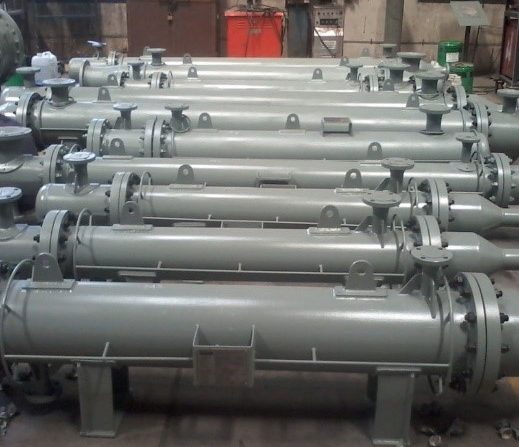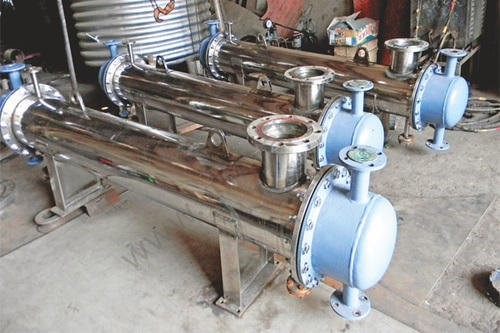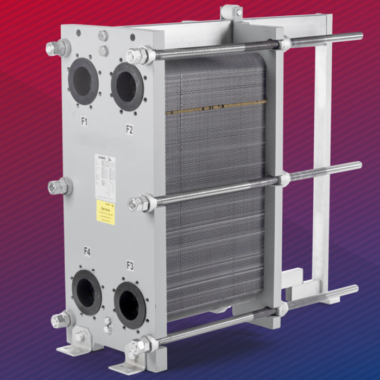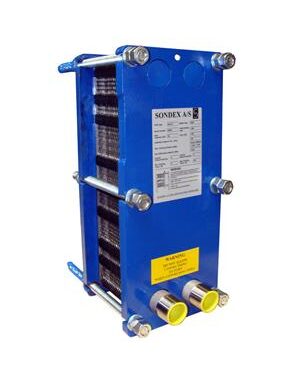Introduction to Shell and Tube Heat Exchangers
Introduction to Shell and Tube Heat Exchangers
Shell and tube heat exchangers are one of the foremost common and flexible sorts of heat exchangers utilized in different businesses around the world. Their strong plan, productive heat transfer capabilities, and flexibility to a wide extend of applications make them irreplaceable in forms requiring thermal energy exchange between fluids. In this introductory guide, we’ll investigate the elemental standards, components, working standards and introduction to shell and tube heat exchangers.
1. Basic Principles:
Shell and tube heat exchangers work on the guideline of heat exchange between two fluids with distinctive temperatures, regularly a hot fluid streaming inside the tubes and a cold fluid circulating exterior the tubes.
The heat transfer happens through the tube dividers, encouraged by thermal conductivity, coming about within the temperature equalization of the fluids.
The plan permits for proficient heat exchange due to the huge surface range given by the tube bundle, advancing ideal thermal execution.
2. Components:
a) Shell:
The external vessel or shell encases the tube bundle and gives auxiliary back for the heat exchanger. It contains the fluid circulating around the tubes.
b) Tubes:
The cylindrical tubes housed inside the shell frame the essential heat transfer surface where heat exchange takes put. They are regularly made of materials such as copper, stainless steel, or titanium, depending on the application prerequisites.
c) Tube Bundle:
The get together of tubes secured inside the shell comprises the tube bundle. It maximizes the surface region accessible for heat transfer and guarantees appropriate fluid flow through the exchanger.
d) Tube Sheets:
The tube sheets found at both ends of the tube bundle give mechanical back and seal the tubes to anticipate fluid leakage.
e) Astounds:
Inside astounds or dividers are introduced inside the shell to advance liquid turbulence and improve heat transfer productivity by coordinating the flow of fluids over the tube bundle.
3. Working Principle:
- Hot fluid enters the heat exchanger through an gulf nozzle and streams through the tubes, exchanging thermal energy to the tube walls.
- As the hot fluid gives off heat to the colder liquid circulating around the tubes, it experiences temperature reduction.
- The cold fluid, in turn, retains the heat from the tubes and exits the exchanger through the outlet nozzle, having picked up thermal energy from the hot fluid.
- Meanwhile, the hot fluid exits the exchanger after discharging its thermal energy and completes the heat exchange prepare.
Shell and tube heat exchangers offer an effective and solid arrangement for different thermal exchange applications over industries. Understanding their essential standards, components, and working standards lays the foundation for leveraging their capabilities successfully in differing forms requiring heat transfer between liquids.







Working Principles of Shell and Tube Heat Exchangers - Cool Fab Equipments April 01, 2024 at 2:16 pm
[…] working guideline of shell and tube heat exchangers rotates around the productive transfer of thermal energy between two fluids with diverse […]
Applications Across Industries for shell and tube Heat Exchangers - Cool Fab Equipments April 01, 2024 at 3:59 pm
[…] Shell and tube heat exchangers discover broad applications over different businesses due to their flexibility, reliability, and efficiency. Applications Across Industries for shell and tube Heat Exchangers: Here are a few common applications: […]